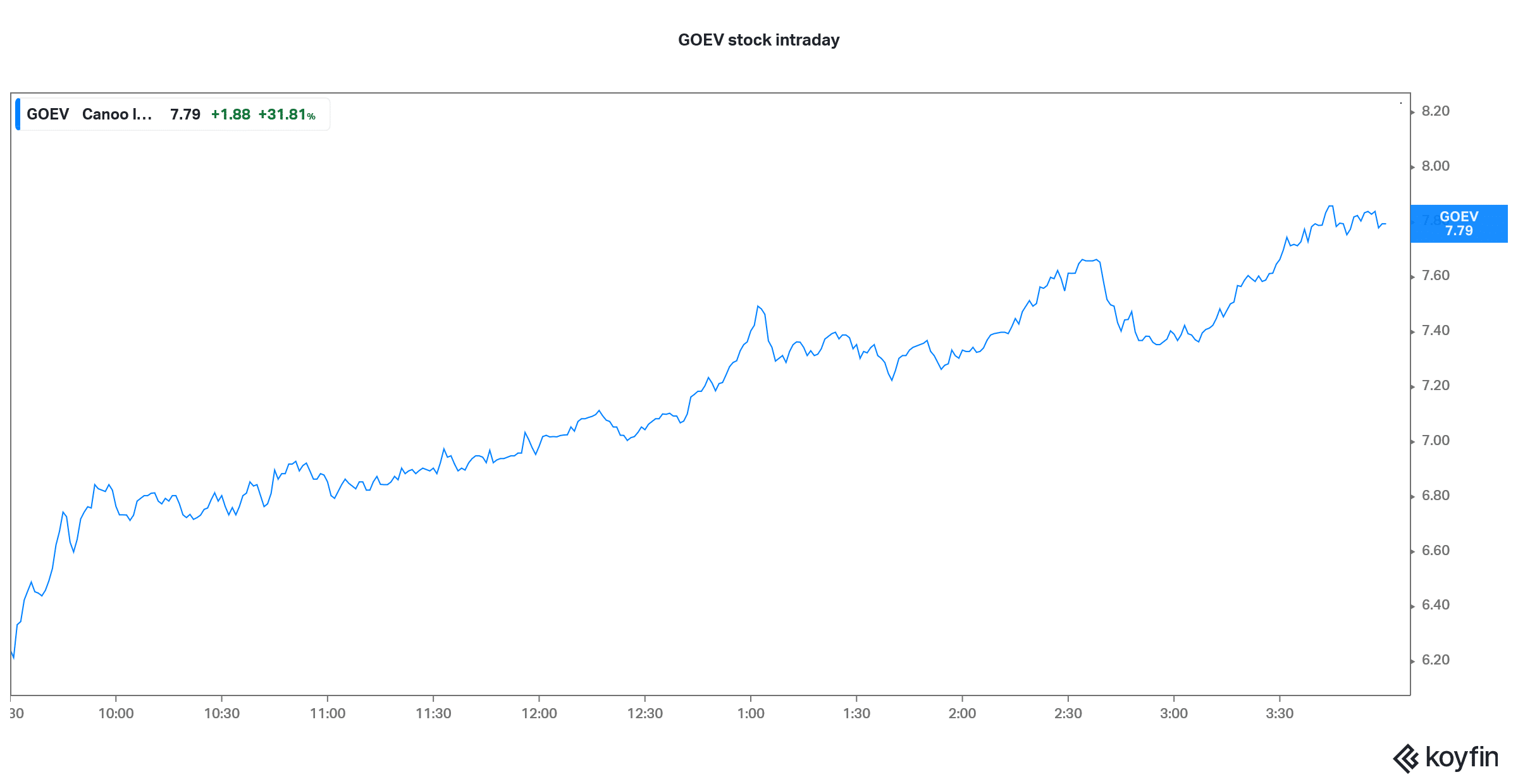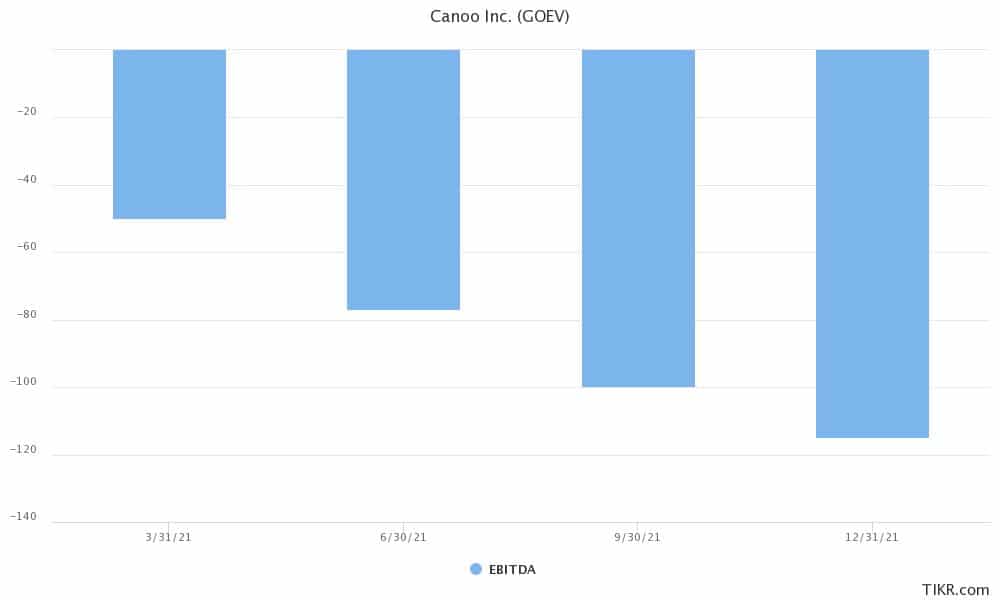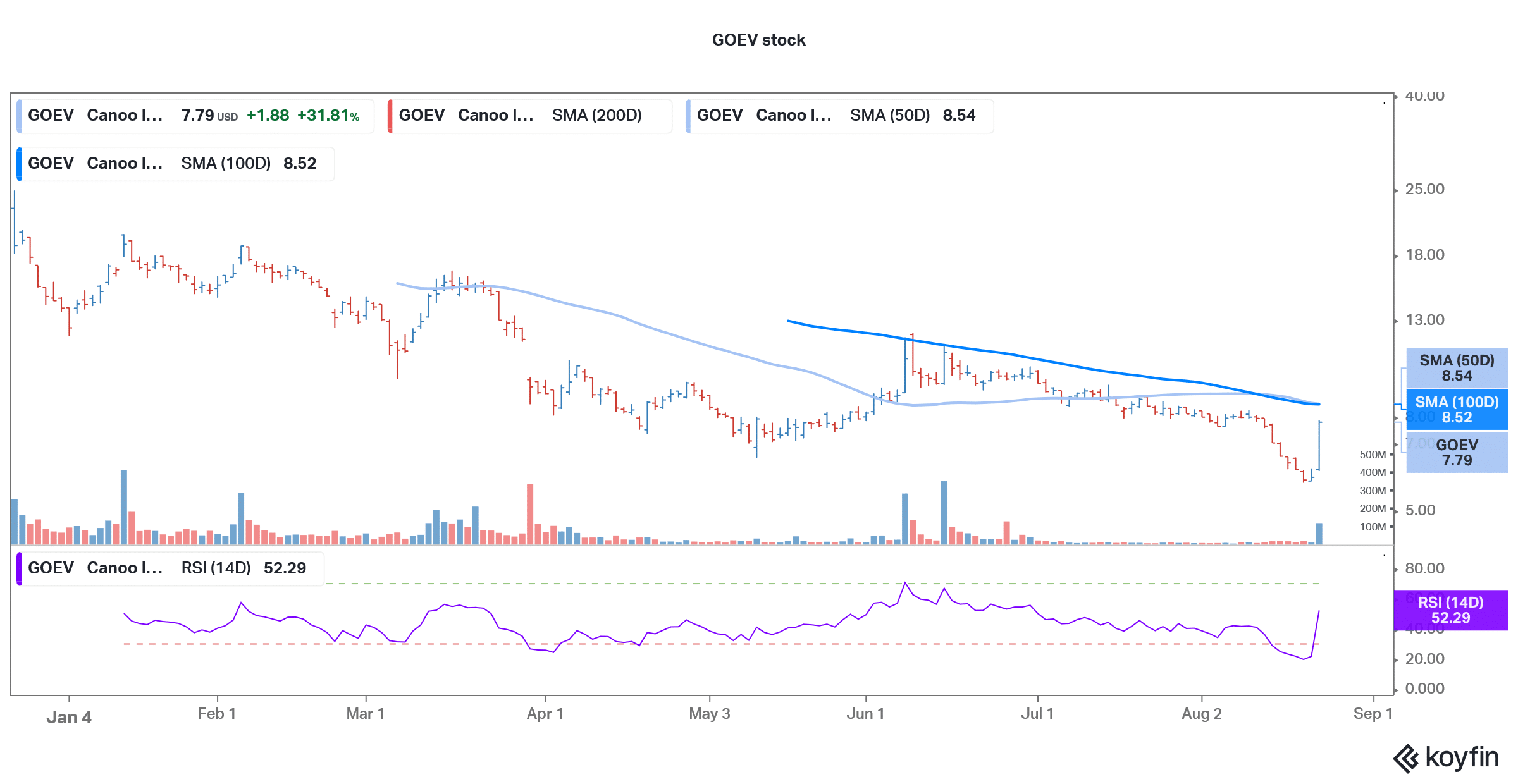Canoo Stock Price Rises 32% – Time to Buy GOEV Stock?
Please note that we are not authorised to provide any investment advice. The content on this page is for information purposes only.
Canoo stock rose almost 32% yesterday and managed to trim its 2021 losses to 38%. What’s the forecast for GOEV stock and should you buy it now?
GOEV stock went public through a SPAC merger last year. Several other companies opted for a SPAC reverse merger to go public. While EV (electric vehicle) SPACs were red hot last year, they have been under severe pressure in 2021. Many EV companies that went public through a SPAC reverse merger are trading below the SPAC IPO price of $10. These include Canoo, Nikola, Lordstown Motors, and Lightning Emotors.
Canoo stock recent developments

The recent surge in Canoo stock hasn’t been due to any company-specific factor, but due to speculations over a short squeeze. GOEV stock is getting popular on social media groups including on Reddit group WallStreetBets which has built its reputation by triggering a short squeeze in several stocks.
Earlier this month, Canoo had released its second-quarter earnings. The company is still in the pre-revenue stage and is posting massive losses and cash burn. In the second quarter, it posted an adjusted EBITDA loss of $76.7 million which was wider than the $17.7 million that it posted in the corresponding period of 2020. The company reported negative operating cash flows of $108.8 million and ended the quarter with $563.6 million of cash.
67% of all retail investor accounts lose money when trading CFDs with this provider
GOEV earnings
“At Canoo we are focused on bringing sustainable and affordable mobility to the working people of America and beyond. We awarded two significant contracts – phase 1, contract manufacturing with VDL Nedcar and phase 2, selecting Oklahoma as our partner for our owned manufacturing plant,” said Tony Aquila, Canoo CEO.
The company has been progressing on its production plans and had sourced 87% of the components at the end of the second quarter which was 13 percentage points higher than the previous quarter. After excluding bulk materials, the company has sourced 95% of the total components. The company also announced that Oklahoma has committed $300 million in non-dilutive financial incentives to support its plant.
While Canoo reported a wider than expected loss in the quarter, the company reported 9,500 non-binding pre-orders which looked healthy. That said, markets have been wary of relying too much on pre-orders to value stocks after the debacle at Lordstown Motors.
Canoo stock forecast
Canoo would launch the first product in 2022 which would be a lifestyle model names Canoo. It would then subsequently come up with multipurpose delivery vehicles and pickup trucks. Meanwhile, the competition has been heating up in the EV space. In the delivery segment, companies like Workhorse and Rivian are competing. Rivian has got a massive order from Amazon, which also happens to be among its investors.
The pick-up segment could get even crowded. Ford would start delivering its F-150 all-electric pick-up next year. Tesla’s Cybertruck would also debut next year. Then we’ll have the Endurance pickup from troubled EV startup Lordstown Motors. Meanwhile, it would be a worthy battle between F-150 and Cybertruck. While the former is America’s largest selling pickup for decades, the latter would be the first pick up from Tesla.
Only three analysts cover Canoo stock currently and it has one buy, one hold, and one sell rating. The stock has a median target price of $7 which is a 10% discount over current prices.

GOEV stock long term forecast
Meanwhile, while short squeezes and sentiments can be short-term price drivers, in the long term, earnings are the biggest price driver. At the investors’ day earlier this year, Canoo tried to pitch itself as a long-term investment. “We’re in it for the long run. I’m in it for the long run,” said Aquila at the event.
“We don’t concentrate on day trades. We concentrate on fundamentals,” he said speaking with CNBC. Aquila added, “Companies, their stock doesn’t always immediately reflect what they’ve done.”
Meanwhile, Wall Street, as well as the markets, were not too impressed. While Bank of America analyst John Murphy called the event “as relatively constructive,” he added, “We remain a bit hesitant as the company still has no binding orders and its business model still appears to be evolving.”
Risks for Canoo investors
One of the biggest risks for EV startups like GOEV is the competition risk. The markets is getting overcrowded. Almost all the legacy automakers are investing heavily in vehicle electrification. Then, we also have incumbent pure-play EV companies like Tesla, NIO, and Xpeng Motors. There is also a flurry of startup EV companies including Canoo, Lucid Motors, and Nikola. Both Nikola and Lucid Motors are set to deliver their first vehicle this year.
EV startup companies like Canoo also face the execution risk as they have to prove their mettle by producing and delivering cars that can grab the attention of consumers in what would be an overcrowded EV market over the next couple of years.

Canoo stock technical analysis
Looking at the technicals, GOEV stock trades below the 50-day and 100-day SMA (simple moving average). It has a 14-day RSI (relative strength index) of 52.2 which is a neutral indicator. The company is in a pre-revenue stage and analysts expect it to post revenues of $72.4 million in 2022. Based on the current market cap of $1.85 billion, this would mean 2022 price-to-sales multiple of over 25x.
If you are looking at a startup EV stock, Fisker could be a better bet as compared to GOEV. Fisker has partnered with companies like Magna and Foxconn for producing its vehicles and most Wall Street analysts see it as a good buy.
67% of all retail investor accounts lose money when trading CFDs with this provider





